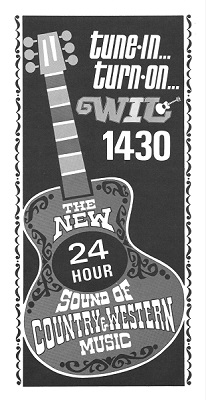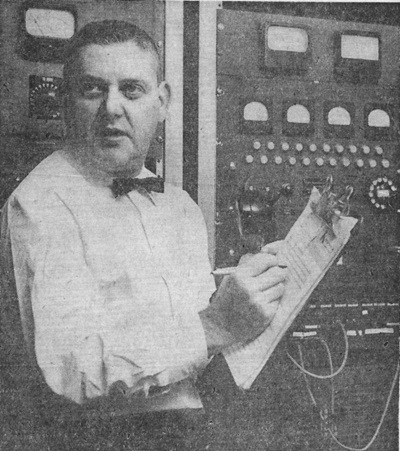Radio Articles
KDNA Sold!
KDNA, “free speech radio,” the only place in St. Louis where you could hear decent jazz, live local musicians, unreleased tapes of Firesign Theatre, and one of the few, struggling listener-supported-no-commercials stations in the country, has been sold to a commercial business interest. Free radio, for many the only radio, is in perilous straights (sic) in St. Louis.
To put it bluntly, the two legal owners of KDNA’s frequency (102.5 FM) have sold the station in order to pay off debts incurred by the station’s original good angel, Lorenzo Milam. The sale price? The latest figure mentioned is a cool 1.1 million dollars.
But the money from the sale of the frequency to Cecil Heftel (owner of several “successful” commercial stations) will not be going to KDNA, nor to the dozens of people who have worked at starvation levels to help the station grow. It will be divided between Lorenzo Milam and Jeremy Lansman. The sale was made necessary by a series of events stemming from the beginning of KDNA.
In the beginning, there was an open frequency at 102.5 FM which the Federal Communications Commission (FCC) was about to allot. As has been the usual practice, hearings were held, and petitions submitted by those who were interested in owning the frequency. The main contenders for 102.5 were a church and Jeremy Lansman. Jeremy spent five years trying to get the frequency and, with a little help from his friends, he finally succeeded. Lorenzo Milam fits into the picture here. At various points in KDNA’s youth, as it was on its way to becoming “listener-supported,” he donated about $250,000.
Thus, KDNA was begin as a partnership: Jeremy’s work and Lorenzo’s money. As it grew, Lorenzo faded out of the picture. He criss-crossed the country helping to establish other listener-supported stations, and KDNA came to be run by a substantial number of “volunteers.”
Then one stormy night, Lorenzo appeared at the door of KDNA’s gaslight square studio-cum-office-cum-living quarters and told the sad tale of economic demise. It seems that he had spent rather recklessly, squandering his entire fortune on various ventures and had in fact, racked up about $400,000 in debts. The station was Lorenzo’s only major liquid asset.
A plan was formulated optimistically allowing for the greatest benefit to both Lorenzo and the station staff. It involved the formulation of The Double Helix Corporation, a non-profit corporation which, when the money was raised, would buy out Lorenzo’s share of the station and insure local ownership of the station forevermore. Lorenzo would get out of debt and the people of St. Louis would have free access to a radio station. As an incentive, Jeremy offered to donate his half-ownership to Double Helix if the money could be raised to buy out Milam.
However, raising $400,000 turned out to be very difficult. At the same time the station had to continue to run, and the $100 a day just to make ends meet had to keep coming in. By August 16, Double Helix had raised only $20,000 over and above the station’s minimal operating expenses.
Lorenzo’s creditors were knocking louder. During a recent conference of “free” radio stations in Seattle in mid-August, Jeremy and Lorenzo decided to sell the station to the highest bidder.
Lorenzo’s share will in part go to paying off his debts. The rest he intends apparently for developing listener-supported stations in other cities; he is disenchanted with St. Louis.
Lansman says that he intends to invest his half of the proceeds in a national non-profit foundation, as yet unformed, with the intention of building, as quickly as possible, listener-supported stations across the country. He and Milam have what they refer to as “the national perspective.”
There is something to be said for this “national perspective.” There are not an unlimited number of radio frequencies left in the U.S. Every so often the FCC opens up one of the remaining frequencies for grabs, and there is usually a frenzied scramble for it. According to Lansman, it is likely that all the available frequencies will be taken within a few years. His intention is to begin as many groups building free radio as possible before the medium falls into the hands of large entrepreneurs.
The lack of new frequencies is a major drawback in KDNA’s fight to survive. After the final contract is drawn up (a process involving several months) and the station is sold where will KDNA go? There are no more frequencies in the area. None. At first glance the prospects appear to be bleak.
The staff of KDNA has not stayed alive this long by taking a defeatist attitude, however. They are now pursuing a plan to share airtime with another station which only broadcasts short hours on weekdays. If they are successful they may be able to buy that frequency. At worst, they hope to be able to share the station’s air time in exchange for certain services.
In addition, the Federal government has recently changed its regulations to allow the office of Health, Education and Welfare (HEW) to allot grants to non-profit, locally owned stations like KDNA. The Seattle “free” station has obtained a $20,000 grant, and a Pacifica network station has received some money. If Double Helix can raise some more money, they may be able to get an HEW grant. Lansman says aid will also be available through the national fund he intends to establish.
At any rate, the deal will take several months to close, and the station will be broadcasting all that time. They need donations to stay alive and to build for the future, and they need other kinds of help to pull it off.
So all is not lost. The survival of KDNA is basically a matter of the dedication of local people to maintaining the concept. The staff of KDNA is dedicated. Many are even optimistic about its survival on another frequency.
(Originally published in St. Louis Outlaw 8/25/1972, bylined “D.N.D.”)
 The first was Davie Lee from Dallas who was also named as music director. That meant he was responsible for all the music to be played on the station. For about a year, Davie did the overnight show before moving to the 10 to 2 slot for the next 20 years. Next was Dick Byrd from San Diego, the morning man from 5 to 9 AM. Chris did the 9 to 11 AM slot.
The first was Davie Lee from Dallas who was also named as music director. That meant he was responsible for all the music to be played on the station. For about a year, Davie did the overnight show before moving to the 10 to 2 slot for the next 20 years. Next was Dick Byrd from San Diego, the morning man from 5 to 9 AM. Chris did the 9 to 11 AM slot. I scraped up the money for the down payment and applied to the FCC for a license to operate a station at Jefferson and Olive. It was my intention at that time to put a small tower on the building there. I got the license and the list of available call letters. I liked the sound of KCFM and chose that one. Since then I’ve had reason to wonder why. People keep thinking it’s a Kansas City station.
I scraped up the money for the down payment and applied to the FCC for a license to operate a station at Jefferson and Olive. It was my intention at that time to put a small tower on the building there. I got the license and the list of available call letters. I liked the sound of KCFM and chose that one. Since then I’ve had reason to wonder why. People keep thinking it’s a Kansas City station.